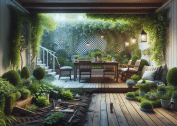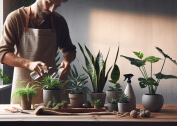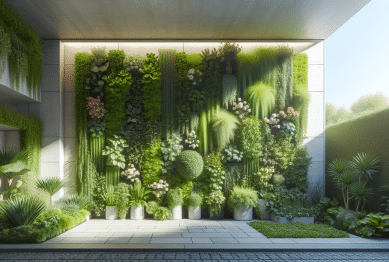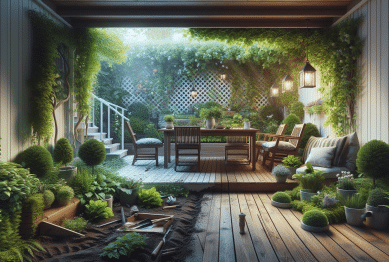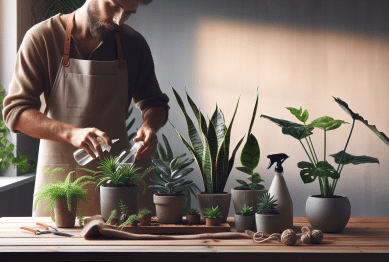Curious about indoor plant care? Discover useful and often overlooked secrets that help houseplants thrive, from watering techniques to pest prevention. Whether you’re a beginner or looking to expand your green space, this guide will reveal surprising tips for healthier greenery—right in your living room.
Choosing the Right Indoor Plants for Every Room
Every home has unique light levels and room conditions, so choosing indoor plants means more than just picking what looks good. Light is the foundation for plant growth, and understanding sunlight exposure is critical. Some plants, like snake plants and pothos, tolerate low light areas such as bathrooms or hallways. For bright spots, think of succulents or fiddle leaf figs—these love basking by a window. Matching the plant’s needs to your environment gives both aesthetics and growth a boost, ensuring you select species that suit your routines and your space’s microclimate.
Avoid choosing only trending houseplants. Why? Because well-known plants on social media don’t always thrive everywhere. Research the humidity and temperature requirements of each choice before buying. For example, ferns appreciate higher humidity, so kitchens or bathrooms work well. In contrast, cacti prefer dry, warm rooms. Understanding this can reduce plant stress and diseases, making your indoor plant care journey more rewarding and less filled with disappointment.
Room functionality also matters. Place air-purifying plants, such as spider plants or peace lilies, in frequently used spaces to help improve indoor air quality. Leafy greens like philodendrons in bedrooms may even support better sleep by refreshing the air and adding a relaxing green touch. By considering placement and function, you’re not just decorating—you’re creating a living, health-supportive environment as part of your home and garden lifestyle.
The Art and Science of Watering Houseplants
Watering is often misunderstood and is a top reason many plants struggle indoors. Most people water on a schedule, but real plant care means responding to the plant’s unique needs. Overwatering is the leading cause of root rot, while underwatering results in drooping and yellowing leaves. Check the top inch of soil—if it’s dry to the touch, it’s time to water. Always let excess moisture escape by using pots with drainage holes. Good habits here can make all the difference to your indoor oasis.
Quality of water also plays a role. Tap water might contain salts, fluoride, or chlorine, which can build up and harm sensitive specimens. Letting a container of water sit overnight helps chemicals dissipate. For finicky varieties, like calatheas or orchids, using filtered or rainwater can prevent brown edges and keep leaves lush. Little changes in your indoor plant care routine here can yield healthier and longer-lived plants.
Don’t forget that watering frequency changes with the seasons. In winter, many plants enter a dormant phase and need less moisture, while spring and summer bring periods of rapid growth and higher water demand. Monitoring and adjusting your approach teaches you to listen to the subtle cues your plants give you. Over time, you’ll notice the rhythm of your indoor garden, and you’ll avoid common pitfalls such as soggy soil or crispy leaves.
Light Essentials: Making Sunlight Work for Indoor Plants
Natural light fuels photosynthesis, but few indoor spaces deliver perfect lighting year-round. Examine each room—south-facing windows give direct light, while north-facing ones offer soft, indirect rays. Test your hand’s shadow in the sun’s path—sharp shadows mean plenty of sunlight, while faint ones mean diffuse, gentle exposure. Position plants accordingly, and rotate them every week for balanced growth and even leaf coloration. Light management is central to robust foliage and blooming success indoors.
When natural light is limited, artificial grow lights bridge the gap, especially during fall and winter months. LED grow bulbs mimic the full spectrum of sunlight without overheating the room. Keep these on for about 12 to 16 hours a day. Some popular indoor gardening methods like hydroponics rely on artificial lighting year-round, making them ideal solutions for apartments and windowless corners.
Watch how your plants react to their spot. Leaves leaning or stretching toward windows indicate a need for more light, while blistered or faded leaves may signal too much direct sun. Small adjustments, like pulling a pot back a few inches or introducing a sheer curtain, can transform the look and health of your indoor garden. It’s all about balance—and understanding how light nuances impact every leaf and bloom.
Mastering Humidity and Temperature for Thriving Foliage
Temperature and humidity play invisible roles in indoor plant health. Most houseplants hail from tropical or subtropical regions, so consistent warmth and moisture in the air make all the difference. Rapid temperature swings—near windows in winter, or air conditioning drafts—can stress roots or cause leaf drop. Keep plants away from heating or cooling vents, and maintain a stable temperature whenever possible to promote strong growth throughout the seasons.
Humidity management is often the secret weapon of experienced indoor gardeners. Many indoor plants love 40-60% humidity. During colder months, heaters dry the air, so group plants, use pebble trays with water, or invest in a small humidifier. These tricks help mimic a natural environment that lush greenery loves. When humidity is too low, leaf edges may crisp; too high, and fungal issues could arise. Balance supports vibrant leaves and active growth year-round.
Some rooms—such as kitchens and bathrooms—naturally have higher humidity, making them perfect for moisture-loving species like ferns or calatheas. In drier areas, look for hardy, low-humidity plants like ZZ plants or sansevieria. Observing and customizing plant placement based on humidity and temperature will minimize problems and keep your collection not just surviving, but flourishing indoors.
Effective Pest Prevention and Soil Health Indoors
Pest problems aren’t just an outdoor concern. Spider mites, mealybugs, and fungus gnats can strike indoors, sometimes unnoticed until plants suffer. Regularly inspect leaf undersides and stems. Isolate any new plants for a few weeks before adding them to your collection. A rapid response to pest sightings curbs outbreaks and protects your entire indoor garden from harm, reducing the need for harsh chemicals as a first resort.
Healthy soil is the foundation for robust plant growth indoors. Avoid reusing old, compacted soil that can harbor diseases or pests. Instead, choose soil formulated for the specific plant type: cacti soil drains fast, while orchid bark mixes let roots breathe. Replenishing topsoil annually and adding organic matter keeps nutrients available and minimizes compaction. This small seasonal refresh is an easy way to nurture root systems and reduce fungal problems over time.
For natural pest management, gentle methods often yield the safest results. Neem oil, insecticidal soap, or even a rinse with cool water resolve common infestations without harming plants or indoor air quality. Keeping your indoor garden tidy by removing dead leaves and checking for moisture under pots creates an environment where pests are less likely to thrive. Ultimately, prevention and observation form the backbone of successful, chemical-free plant care indoors.
Creative Display Ideas to Enhance Indoor Greenery
Displaying houseplants goes beyond pots on windowsills. Hanging baskets, plant stands, and vertical wall gardens create visual interest and maximize usable space. Cluster small varieties with different shapes together for a mini jungle effect or let tall palms fill empty corners with lush leaves. Using plant groupings not only beautifies but helps maintain ideal humidity among clusters, showing function and artistry working together in your home and garden.
Decorative containers and repurposed vessels—like teacups, baskets, or vintage tins—provide character, but remember to add drainage or use inner nursery pots. Plant shelves and ladders introduce height variation and take advantage of vertical space. This layered approach can also make light distribution fairer, as top shelves catch rays while lower levels provide gentle shade for delicate species, ensuring all plants get what they need to thrive.
Seasonal updates keep displays fresh and lively. Rotate plants to spotlight blooming varieties or change placements with the sun’s movement through the year. By embracing these simple styling strategies, anyone can create rooms brimming with creativity and living décor—a home transformed by an ever-changing, thriving indoor garden that reflects personality and style.
References
1. The Old Farmer’s Almanac. (n.d.). Growing Houseplants: A Guide to Indoor Gardening. Retrieved from https://www.almanac.com/plant/houseplants
2. University of Minnesota Extension. (n.d.). Growing Indoor Plants with Success. Retrieved from https://extension.umn.edu/houseplants/growing-indoor-plants-success
3. NASA. (1989). Interior Landscape Plants for Indoor Air Pollution Abatement. Retrieved from https://ntrs.nasa.gov/citations/19930073077
4. Royal Horticultural Society. (n.d.). Houseplants. Retrieved from https://www.rhs.org.uk/plants/popular/houseplants
5. North Carolina State Extension. (n.d.). Houseplant Care. Retrieved from https://content.ces.ncsu.edu/houseplants
6. Missouri Botanical Garden. (n.d.). Conservatory – Houseplant Care. Retrieved from https://www.missouribotanicalgarden.org/plant-care/houseplants



